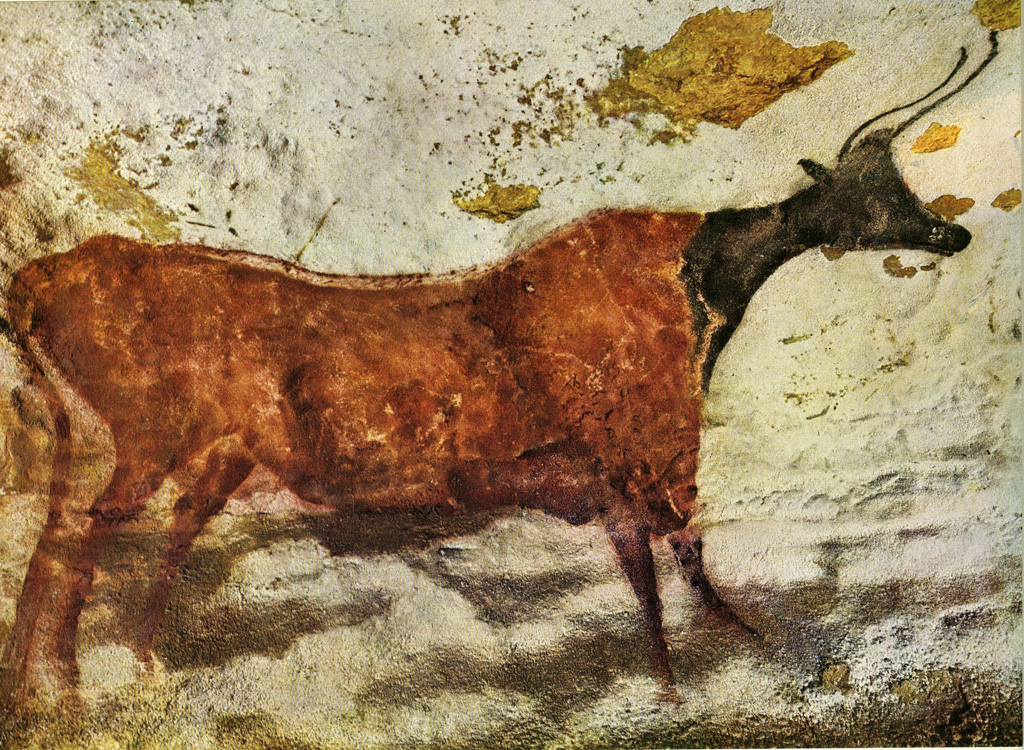
Conclusion
The modern San ethnographers
uncovered testimony that rock art of the most admired and revered animals
was a way of mystically connecting with the spiritual power the animals
possesed. It's hard for moderns to set aside all their training and beliefs
to imagine a new world where language, art and religion have no precedent,
where large, fast, powerful animals are the most fascinating beings in
all the world. Killing animals and eating them, according to our best
information, led to a mythology of reverence for animals, of rebirth,
but also a belief that humans and animals shared the same life power.
The animal flesh became human flesh. The animal spirit was the human spirit.
When flesh died, it merged into the earth. Going underground to see and
paint the animal spirits down there may have taken a similar kind of courage
it took to kill a mammoth. Shamans, which in Paleolithic times may have
been anybody, were dreaming themselves into the mystery and bringing part
of it back. The caves were the parchment, may have been the place of awakened
visions. The painted animals are not so much a message as they are a direct
perception of the force of life. In a sense we can say the Paleolithic
is no longer pre-historic, because the people left a record. We have trouble
reading it, but all one has to do is look at the paintings to appreciate
the work of our ancestors who left these images of their own profound
amazement. Whatever the motivation, everyone now agrees, the result was
art.
Prehistoric Painting: Lascaux - or the Birth of Art, text by Georges Bataille, photos by Hans Hinz, Claudio Emmer. Albert Skira publisher, Switzerland, 1955.